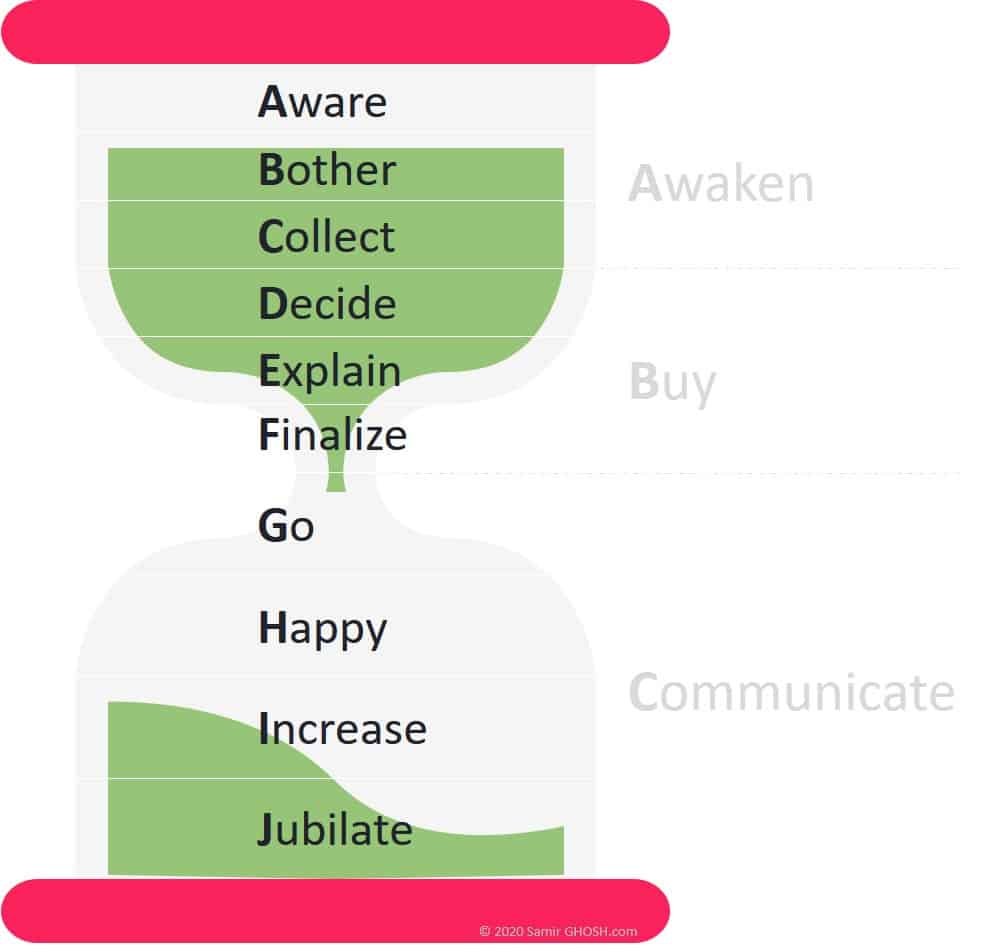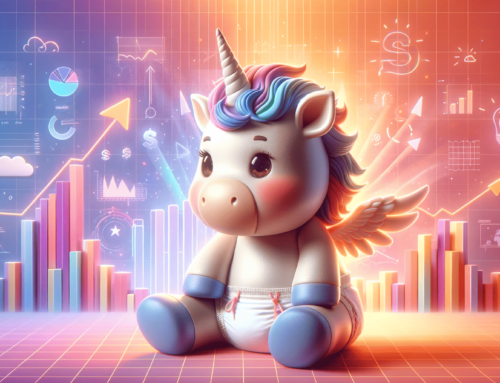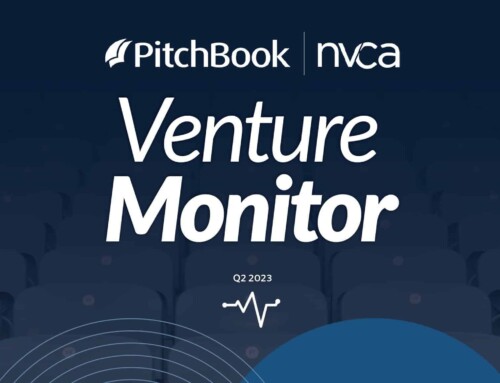Customer Empathy is Key To Growth
Successful business growth experts have all along known this, which industry is starting to espouse – empathize with and deliver value to your prospects and their business you will receive. The adversarial approach of “winning” or “taking” prospects’ business will not work in the long-term. Greater communication, democratization, and transparency has assured this.
Central, then, to effectively growing your business is understanding your “Buyer’s Journey” – not your sales process, but the process your prospects go through when buying your products or services.
The days of selling your multi-million-dollar perpetual licensed software EA (enterprise agreement) and walking away celebrating, “Mission Accomplished” are over. If your customers don’t actually implement and use your products, what chance is there that they’ll be happy enough to buy again, let alone recommend you to others? Thus, the “funnel” has evolved to an hourglass where your happy customers can become immensely valuable sources of growth via a wide range of assistance from “social proof” to active evangelizing.
There’s plenty written already about the buyer’s journey now. Below is my “ABCs” version to hopefully make it easier to remember the stages. Even at the highest level, you can think of your prospects as going through 3 macro phases: 1) Awaken to the possibility, 2) deciding to Buy, and 3) Communicating their satisfaction to others (word of mouth).
Aware
Most agree a buyer’s journey must start with some level of awareness. If they’re unaware, you can’t really help them. But I see disparity in the subject of awareness; thus, break this into two types:
- Brand Awareness: Has the prospect ever heard of your brand (name)? Do they know you or your products even exist, let alone what you do or offer for whom?
- Need Awareness: Of course, I use “need” here broadly as “need” is relative – e.g., some products provide additional pleasure rather than eliminate a pain, and one person’s need is another’s nice-to-have. Even if your prospect is aware of your brand or company, awareness of their need is critical path to any sale.
For example, if you sell cars, have your target customers heard of you? Do they know about the category of cars in which you specialize? Do they understand the general benefits?
Bother
Why should the prospect bother to satisfy this need? Does it pertain them? Is it important enough? Have you conveyed the benefit(s) specific to them? This is one of the reasons why segmentation and appropriate targeting is so important – so you can tailor your messaging and your offering to a very specific need of a niche group of prospective customers.
For example, prospects may know that electric cars have multiple benefits such as fuel efficiency, low maintenance. Maybe they do not realize how much one could save them (if savings is important enough for them). Once convinced they should bother, then they’ll continue down their buyer’s journey.
Collect
So let’s say they now see why they should bother, how they might benefit. Do they just purchase now? For bigger decision items (e.g., larger consumer purchase, or important enterprise purchase), they’ll likely collect more information – gathering their own priorities, plus those from family or colleagues, social and pundit recommendations. They’ll research the need, the solutions, competitors, others’ experiences, expert opinions, etc.
Back to the car example, you can imagine a prospective car buyer will list out their (and family’s) priorities, research Kelly Blue Book prices, Consumer Reports, speak to friends, research online, etc.
Decide
At some point, your prospect will have gathered enough info to start analyzing and evaluating his/her choices. In fact, this is often iterative and intertwined with collecting information. At some point, there is enough information and analysis to make a decision: whether to buy at all, and if so, which option to buy, perhaps based on conditions such as negotiated price.
In the car example, s/he may create their own algorithm for scoring the cars – e.g., perhaps safety is the most important, and then fuel efficiency.
Explain
If purchasing for themselves, they may only explain the purchase enough to themselves to feel comfortable making the purchase. However, often, the buyer may need to explain and justify the purchase to parent, spouse, boss, or procurement department.
In a family, a car can be a major purchase. It’s likely one will have to explain the purchase to a spouse, for example.
Finalize
This is finalizing the purchase – e.g., signing contract, issuing a purchase order, or making payment.
For a car, this may be paying for the car in full, or signing a lease agreement.
Go
This is the first post-purchase step (in the bottom half of the hourglass) where the prospect, now customer, goes and uses their product. If they do not use your product, they cannot become happy customers, cannot become social proof or evangelists. Customer Success staff focus on getting new customers not only up and running, but successful with their products. In the software world, SaaS has made this so much easier than perpetual licenses that may have sat on a shelf and you’d never know.
After purchasing your new car, the dealer may acquaint (train) you with all the features before letting your drive off to reduce any potential usage frustrations. They may also call you a few weeks later to see if you have any issues or questions.
Happy
Ideally, your customer understands, uses, and is happy with your product.
The car owner hopefully enjoys driving their new car.
Increase
Your customer is so happy with your product that they increase their consumption. They may use it more, shortening the time to buy another; or they may purchase and use more of your products.
The happy car owner may drive it more or even buy a second one for the family.
Jubilate
The ultimate destination you could hope for your prospective lead is not only to become a customer but to become an ambassador for your product, company, and brand. They may wear your branded apparel, recommend you to family or friends, or even actively evangelizes espousing your benefits over alternatives.
Your car owner now orders and actually wears apparel with your logo. S/he creates YouTube videos evaluating and praising your product and company often generating valuable leads at no additional cost to you.
For ages, sales teams have focused on optimizing their “sales funnel.” Marketing, Sales, in fact, the entire company would be well served to immerse themselves in their prospective customers’ buyers journeys. Depending on your business, different segments or roles within a buying process may have different steps in their journey. Optimizing your business for growth and profitability has much to do with reducing friction and in fact helping your prospects through each step of their buyer’s journey. Hopefully, this hourglass and simple ABCs will help you remember the typical steps (feel free to customize for your business) and remember the importance of the post-sale bottom half of the hourglass…customer success.
It’s very rewarding if you find any of this useful, so please let me know.









Leave A Comment